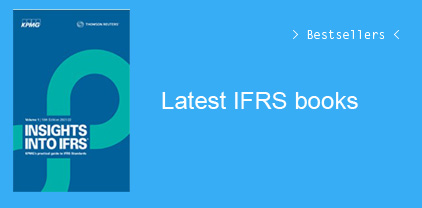Revenue Recognition Guide is a comprehensive reference manual covering key concepts and issues that arise in determining when and how to recognize revenue. It covers the new authoritative literature related to revenue recognition that became effective in the past few years. Revenue Recognition Guide clarifies revenue recognition concepts and principles, and provides insight into issues that have been addressed as the accounting profession prepares to adopt the new revenue recognition literature.
This book explains the framework and principles underlying the new guidance. It also includes discussion of implementation issues that have arisen as companies, auditors, regulators, and others have worked to understand and prepare to implement the new standard. Many of these issues have been discussed by the FASB/IASB Joint Transition Resource Group for Revenue Recognition (TRG), which the two Boards set up when the new standard was issued in order to provide a forum for a group of experts to discuss implementation issues. This edition of the Revenue Recognition Guide incorporates changes in accounting literature and interpretive developments through press time.
This edition provides comprehensive discussion of the new authoritative literature on revenue recognition that is included in Accounting Standards Codification Topic 606, Revenue from Contracts with Customers, and International Financial Reporting Standard 15, Revenue from Contracts with Customers. As public companies adopted the new standard in 2018, the book includes excerpts from public filings illustrating many of the principles of the new standards.
How Is This Guide Organized?
Within the 14 chapters of the book, the text includes references to the paragraphs of the authoritative literature that address key points. In addition, references are included to relevant examples in the accounting literature that highlight the application of the requirements. This book also includes a number of illustrations that focus on key points, and a number of Practice Pointers that highlight key consequences of the guidance and identify issues to watch for when dealing with certain revenue transactions.
Organization
Objectives and Framework
- Chapter 2, “Scope and Overview of Topic 606/IFRS 15,” explains the objectives and core principles of the new revenue recognition standards, and provides a high-level discussion of the five-step model that frames the guidance on determining the amount of revenue and the timing of revenue recognition. Chapter 2, “Scope and Overview of Topic 606/IFRS 15,” also discusses the scope of the new guidance.
- Chapters 3-7 provide a detailed discussion of each of the five steps in the model, including implementation guidance in the standard, as well as guidance that has resulted from discussions of the TRG and the IFRIC.
Related Matters
- Chapter 8, “Continuing Involvement,” discusses guidance in Topic 606/IFRS 15 on certain additional matters, including common contract terms such as warranties, rights of return, repurchase provisions, and options for additional goods and services.
- Chapter 9, “Costs of Contracts with Customers,” addresses the guidance on costs of revenue transactions.
- Chapter 10, “Presentation,” addresses matters of the presentation of revenue transactions in balance sheets and income statements, including discussion of whether to recognize transactions on a gross or net basis.
Application to Common Arrangements
- Chapters 11-13 then explain how the model applies to common issues faced in the delivery of products, services, and intellectual property to customers. Explaining how the five steps apply to common transactions is intended to both provide practical guidance for readers and reinforce the understanding of the principles of the standard.
Financial Reporting
- Chapter 14, “Disclosure,” addresses disclosures required by the new literature that go far beyond the disclosure requirements that currently exist. This chapter also discusses revenue disclosures required in SEC filings in areas other than the financial statements.
































